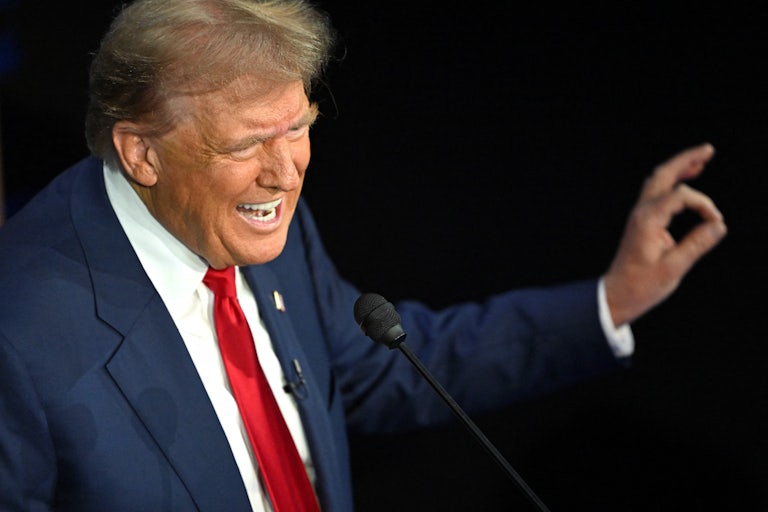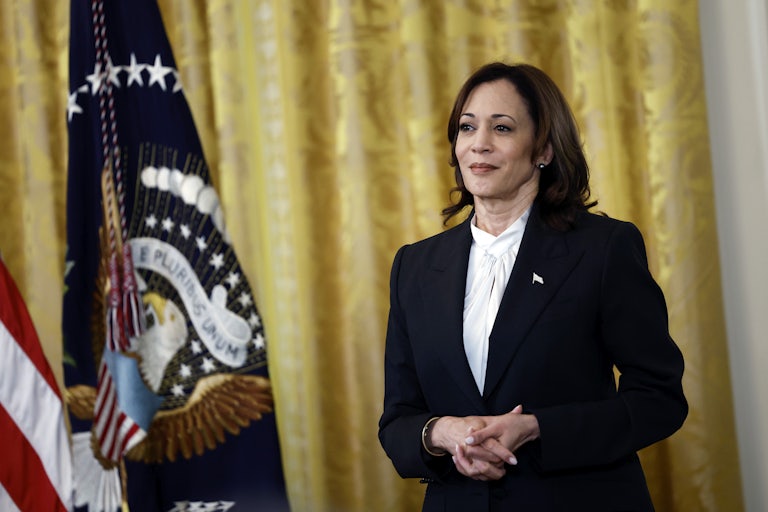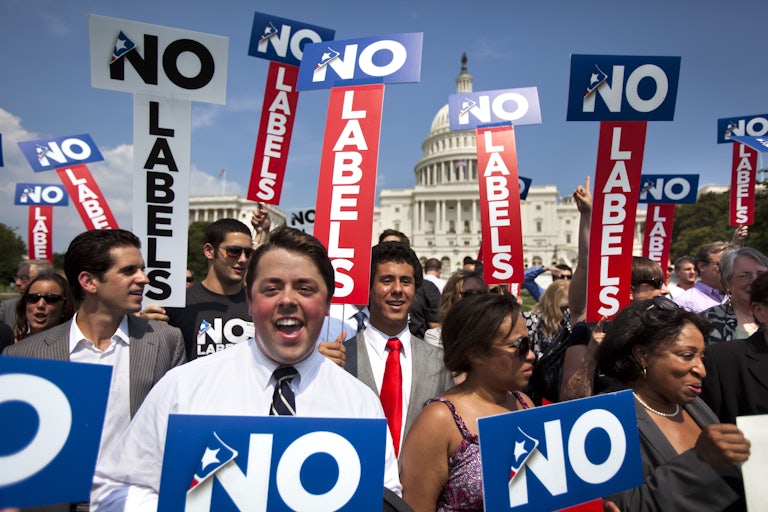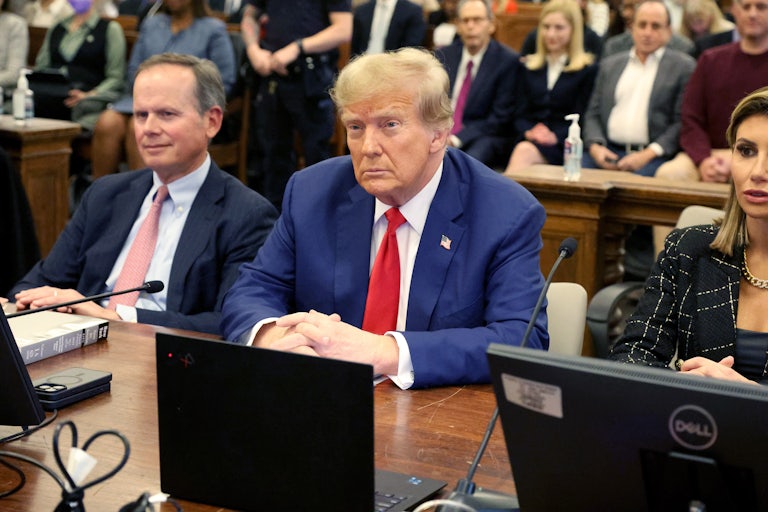The Media’s Demented Policy Illiteracy
The press has been feverishly demanding more and more wonky details about the presidential candidates’ proposals. If only they could understand them!

It’s pretty rare for the Columbia Journalism Review and Dallas Mavericks owner Mark Cuban to be dishing on the same topic. But media critics touched a nerve this week with accusations that the political press suffers from a “coherence bias,” particularly as it relates to Donald Trump: the tendency of reporters and editors to take his verbal diarrhea and transform it, through the magic of elision and omission, into statesmanship. TNR contributor Parker Molloy has an even better word for this practice: “sanewashing.”
That this discussion arose in the days leading up to the presidential debate was to the benefit of those tuning in. It likely primed the pump for some of the real-time fact-checking of those moments when Trump seemed to be completely gacked up on whoop chicken, such as his contention that Democrats support “post-birth abortions” and that immigrants in Ohio are stealing and eating pets. But if there’s an agreement to be had on sanewashing, then let it serve as a springboard for a larger and more important conversation: whether the political media’s grasp of policy is truly commensurate with its constant demand for it.
Recent attempts in the mainstream media to understand and explain wonky matters have been embarrassing failures—a dereliction that shares strands of DNA with its tendency to tidy up Trump’s constant barrage of nonsense. A prime example can be found in one of the stories that provoked the sanewashing conversation: the Associated Press’s recap of Trump’s appearance at the Economic Club of New York last week, in which he offered up several paragraphs of word salad in lieu of a discussion of child poverty. The straight story of what happened was a naggingly simple one: Trump dodged a question about child poverty in order to pivot to what he wanted to talk about—tariffs—and shoehorn in his preferred talking points. He did this less artfully than many politicians, but it would have been sufficient to simply say he did not bother to answer the question he was asked.
But the AP didn’t opt for the straight story, and instead constructed a world rivaling George R.R. Martin. In the AP’s version of cloud-cuckoo-land, Trump explicated an innovative idea, in which the proceeds from our trade wars would facilitate bountiful childcare benefits … somehow. It’s bad enough that the AP did all this heavy lifting just to make it appear that Trump used complete English-language sentences in a speech. But considerably more effort was expended here to convert several minutes of sundowner gobbledygook into an allegedly earnest policy proposal. To get there, these reporters had to ignore a vast amount of information and experience, including knowledge of the policies that Republicans have actually supported and the informed opinions of actual experts.
The reality is that what will happen in Trump’s second term looks more like this: These tariffs get applied. American consumers pay more money for goods. The money goes into federal coffers. And the GOP passes (and Trump signs) budget packages that include massive tax cuts for billionaires and corporations, alongside massive cuts to funding for social services.
Could that money have paid for childcare? Sure! It could have gone to baking the world’s largest funnel cake! But in our actual reality, the GOP is adamantly, philosophically opposed to providing government assistance to the people who need relief the most, thus rendering meaningless whatever benefits Trump thinks all of his alleged “big numbers” might provide. This kind of forthright, accurate analysis was available had anyone at the AP understood tariffs at the same level of intellectual heft as the Twitter menswear guy.
This is only the latest example of the vast delta in the political press between acquiring policy information and understanding that information. The signature policy goal of the next Trump administration, to hear reporters tell it, is the facilitation of a massive deportation plan that would evict tens of millions of people from the country. One question that could be asked here (because it’s the first question put to any Democratic policy proposal) would be, “How will you pay for it?” Literally where does the funding to spin up this effort come from? How do you plan to get the United States out of the deep recession that would occur as a result of this population extraction? (If Trump’s answer is, “I’m doing tariffs,” maybe remind him that those proceeds were already earmarked to fix child poverty.)
So it was very weird when—with all these unasked urgent questions—a recent New York Times story portrayed his nigh-on unworkable plan as a linchpin in a proposal to ameliorate the affordable housing crisis: “Harris and Trump both have plans to address America’s affordable housing crisis,” the story originally read. “Hers include tax cuts and a benefit for first-time buyers, and his include deportations and lower interest rates.” (The story was later stealth-edited to massage these sentences out of existence.)
The original contention of the piece was to portray economists as equally skeptical of both candidates’ housing proposals. But here, the entire idea that a mass deportation plan would play a role comes bull-rushing into the discussion without warning and without any explanation of how it would work. Would low-income Americans be literally moved into the domiciles of freshly evicted immigrants? No one knows, and no one can say! (And to be honest, “economists” would probably be even more keen to find out how Trump’s plan to issue massive tax cuts for the wealthy—and the ballooning deficits that would follow—would somehow lead to lower interest rates. The Times just takes it on faith that Trump will somehow magically summon them from the economic wreckage of his grand design.)
That so much falls by the wayside in covering Trump’s policy proposals might be somewhat acceptable if this lackadaisical approach was consistently applied across the board, but this hasn’t been the case. I am sympathetic to journalists, from campaign reporters to The New Republic’s Alex Shephard, who think Kamala Harris ought to put more meat on the bone in terms of policy, but we should be at least as demanding that Trump answer the “How?” and “WTF?” questions that his ideas engender.
What’s very clearly emerged from recent weeks of campaign trail coverage is a rather glaring disparity. On one hand, we have an eminently defensible drive to get Harris to pony up more details of what she wants to do as president, and real scrutiny being paid to how much her policy preferences have shifted in the past five years. On the other hand, we have reporters dutifully filling in Trump’s blanks, excusing his psychopathic edges, and inventing weird cause-and-effect chains that purport to explain how his ideas work. I’m glad that the press is taking Trump both literally and seriously, but no one can look seriously at the literal details of his “proposals” and conclude they make any sense. To pretend otherwise is to write fiction, not journalism.
This article first appeared in Power Mad, a weekly TNR newsletter authored by deputy editor Jason Linkins. Sign up here.









